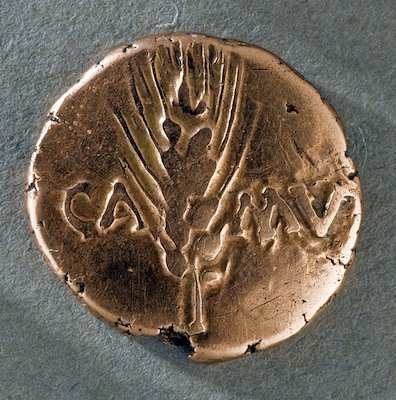You are here: Explore > Colchester's History
 Whilst Colchester is perhaps best known as a Roman city its history stretches back well beyond that with an ancient Iron Age settlement, once ruled by Cuneobelin 'King of the Britons' established here long before the Romans arrived. Beyond a few earthen mounds little from this period has survived in the landscape, but numerous artifacts have been discovered over the years and an impressive collection is on display in the Castle Museum.
Whilst Colchester is perhaps best known as a Roman city its history stretches back well beyond that with an ancient Iron Age settlement, once ruled by Cuneobelin 'King of the Britons' established here long before the Romans arrived. Beyond a few earthen mounds little from this period has survived in the landscape, but numerous artifacts have been discovered over the years and an impressive collection is on display in the Castle Museum.
Following the Roman Invasion in AD43 a city was established on the site of Camulodunum and designated the Roman capital of Britannia. It's destruction at the hands of Boudicca is well documented, but the Roman settlement rose up again and the remains of several buildings from this period can still be seen on a trip to the town today.
Following this period of prosperity for Colcheser the town fell into decline, largely neglected by the Anglo-Saxons and eventually occupied by Viking Invaders. It was Edward the Elder who drove the Vikings out in AD917 and town life began to prosper again. So much so that by the Norman Invasion in 1066 the Castle was built on the site of the old Roman Temple and it again became one of the most important English towns.
Periods of boom and bust came and went over the tubulent Medieval and Tudor periods, with the large religious sites of the Priory and Abbey establishing themselves before being closed by Henry VIII and eventually being near-destroyed during the English civil war and Siege of Colchester.
Again, the town recovered, with relative prosperity coming in the 18th and 19th century, a period that can be well-explored on a visit to Hollytrees Museum, alongside the significant changes to the town during the Victorian period.
- Accommodation
- Things to Do
- What's On
- Food & Drink
© Visit Colchester. All Rights Reserved






